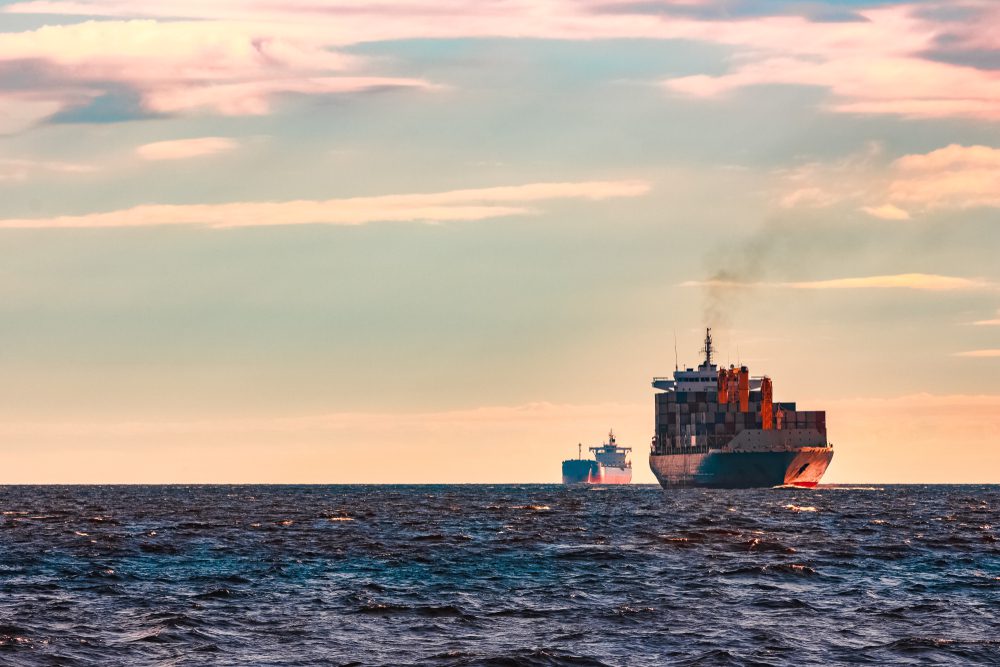Photo: Infinitum Produx / Shutterstock
By Claire Jiao, Ann Koh and Krystal Chia (Bloomberg) — Even as countries try returning to some semblance of pre-pandemic life, ongoing restrictions are wearing thin a crucial human link in the global supply chain.
More than 200,000 seafarers stuck on merchant ships carrying everything from medical supplies to grain and oil are at increasing risk of mental and physical fatigue as port restrictions and canceled flights snarl the ability of vessels to change crews, according to the International Chamber of Shipping.
Though invisible to most consumers, seafarers have kept international trade afloat through the pandemic and what’s likely the worst recession in almost a century. While industry bodies like the ICS warn the sector faces a “humanitarian crisis” that jeopardizes the flow of goods and is pushing for governments to ease restrictions, some shippers and crew are taking matters into their own hands.
In some cases, ships are diverting to ports they wouldn’t otherwise visit to swap workers, a practice typically reserved for medical emergencies. Meanwhile, firms are seeking to ease the burden on crews. A.P. Moller-Maersk A/S, which controls about a fifth of the global fleet used to transport goods by sea, has extended seafarer contracts and offers benefits like increased internet connectivity and mental support programs.
“Crew changes are by far one of the biggest challenges to shipping that have emerged from this virus outbreak,” said Ralph Leszczynski, head of research at shipbroker Banchero Costa & Co. “The preferred solution so far has been to extend the existing contracts of the crews” as deviating a ship could add hundreds of thousands of dollars in costs, he said.
Seven bulk carriers diverted this month to change crews in the Philippines, home to one in four of the world’s seafarers, while another is expected to arrive in June, according to local manning agencies A. Magsaysay Inc. and Baliwag Navigation Inc.
Oil tanker China Dawn, which was en route to Singapore from Brazil, diverted to the Indian port of Cochin this month to allow workers to disembark because of the mental strain from the prolonged period at sea, according to reports from newspaper South China Morning Post and Splash, which covers the shipping industry.
“Stringent restrictions imposed by many countries, including denial of shore leave and access to essential medical assistance, is contributing to fatigue and exhaustion,” ICS said in a May 21 letter to United Nations Secretary General Antonio Guterres. “We are concerned about suicide and self-harm amongst this vulnerable population of workers.”
Few Options
Normally, about 100,000 seafarers change ships every month during scheduled port stops, when vessels discharge and pick up freight. The longest seafarers should be on board a ship is 11 months, according to the Maritime Labor Convention.
But now only a handful of ports allow full or limited crew transfers, according to a list by Inchcape Shipping Services. And scheduling flights for seafarers when many airlines have grounded their fleets complicates the task further.
“There is a huge pent-up demand for crew changes across the industry,” said William Fairclough, managing director of Wah Kwong Maritime Transportation Holdings Ltd., an independent shipowner in Hong Kong with 19 vessels. The company has managed to swap crews five or six times over the last few weeks when ships made planned stops in China, he said.
By the middle of June about 150,000 seafarers a month will need international flights to facilitate crew changeovers, according to a May 27 statement from the heads of maritime, labor and aviation organizations of the UN. About half of those will be joining ships and the other half flying home.
For a bulk carrier running commodities between Australia and Japan, a diversion to Manila would add about three days of travel time and approximately $30,000 to $48,000 at current shipping rates, according to a person who handles crew matters at an Asian bulk-carrier firm, and who asked not to be identified as company policy bars speaking to the media. That’s comparable to flying a crew of 10-15 from the Philippines to Japan and quarantining them for two weeks, which costs roughly $3,000 per person, he said.
The U.K. has enabled crew changes throughout the Covid-19 crisis and Germany lifted quarantine measures for seafarers in early April, according to the ICS, which recommends crews are tested for the virus before departing their country of origin. Rotterdam is another option for crew changes, but a quarantine requirement has increased costs, according to Doris Magsaysay-Ho, president of Manila-based A. Magsaysay Inc.
Dutch airline KLM said it would begin operating four flights a week between Amsterdam and Manila as of May 25 to help facilitate marine crew changes. Some Filipino seafarers have been allowed to enter Japan, according to Dario Alampay, vice-president for operations of Baliwag Navigation, which has sent two marine crews through Tokyo.
“In the absence of governments providing travel exceptions for seafarers, or facilitating viable travel routes to repatriate crews, it’s likely we will continue to see some diversion occur,” ICS Chairman Esben Poulsson said in an email.
–With assistance from Annie Lee and Aya Takada.
© 2019 Bloomberg L.P

 Join The Club
Join The Club










